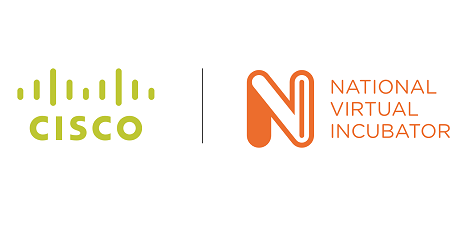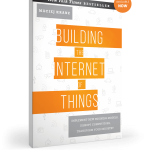
IoT Disruptive Innovation: lessons from the National Virtual Incubator (UK)
Disruptive innovation and the Internet-of-Things (IoT) are two of the most used (and abused!) phrases in contemporary business.1 So what happens when you dare to combine them ..?
The National Virtual Incubator (NVI), hosted by Cisco UK and Ireland in March 2017, brought together practitioners across industries – including manufacturing, utilities and home-automation – and different company sizes – from start-ups to multi-national enterprises – to debate this bold juxtaposition in a series of presentations and discussions.
IoT REALITY CHECK: SHOW ME THE MONEY!
Which industries can actually demonstrate return-on-investment (ROI) through IoT solutions? This was the subject that Brian Jordan (Head of Innovation & Industry Solutions, Cisco Ireland) addressed, with reference to Maciej Kranz’s recent book Building the Internet of Things.2

Utilities, manufacturing, transportation and healthcare sectors can all demonstrate ROI through IoT implementations. However, as with (all) projects, it is the scope, governance and process that will ultimately determine success or failure: create a big vision, but identify a small-enough project that is manageable.
IoT IN RESIDENTIAL MARKETS: WHAT WORKS? WHAT DOESN’T WORK?
Representatives from the home-automation industry examined business partnerships in IOT. What has worked? Moreover, what hasn’t? Featuring the example of a home-automation company, which had evolved from solving specialised healthcare and accessibility challenges for residential out-patients to developing more general retrofit smart-home solutions, the session highlighted the opportunities (and pitfalls) of the consumer residential IoT market.
In order to succeed, vendors must offer measurable value to the customer rather than creating technology solutions in search of a business case.
LEAPFROG LESSONS FROM IoT UTILITIES IN EMERGING MARKETS
In a session on utilities in low-connectivity, emerging markets, participants highlighted the paradox of Keyna. A pioneering mobile-payment ecosystem has been underpinned by highly-inefficient (and environmentally-damaging) off-grid mobile-charging solutions (diesel generators) for consumers’ mobile devices.
Analysing the roll-out of solar-power generators, the findings re-inforced the “start-small” guidance of Building the Internet of Things. In this case, solar-power utilities can use LoRaWAN at the network edge, connecting to 2G core network with short-message-service (SMS) and a Cloud Application Programme Interface (API) for integration into applications such as monitoring and billing.
HOW TO EXPERIMENT WITH IoT IN A SAFETY-FIRST FACTORY ENVIRONMENT
In giving their take on disruptive IoT in manufacturing, representatives from the shop floor of one of the largest car plants in Europe pointed out that many supposedly “new” technologies (such as battery-powered vehicles and aspects of the Internet-of-Things) are, in fact, evolved iterations of much older technologies (for example, the electric vehicle is over a century old!).3
Highlighting ongoing disruption in the automotive industry – from connected cars to smart supply chain and predictive maintenance – participants sought to answer the conundrum: how can a manufacturer undertake test-and-learn innovation experiments in work environments that are highly regulated by safety requirements?
For this international manufacturer, the proposed solution was bi-modal: take the long view (globally) while innovate locally with small-and-medium sized businesses (SMBs). IoT use cases included: machine learning for automation, predictive maintenance for servicing, and LoRaWAN-based tracking solutions to avoid loss of materials in transit.
HOW CAN IoT ACCELERATE YOUR DIGITAL TRANSFORMATION?
Whether you’re an sceptic, believer, or agnostic in the role of IoT in disruptive innovation, why not join #CiscoChat #IoTChat on Twitter channels @CiscoServices and @Cisco_IoT on Wednesday, April 5th 2017 at 7PM BST (11AM PST, 2PM EST) to continue this conversation?

REFERENCES
1 Clayton Christensen (1997) The Innovator’s Dilemma: when new technologies cause great firms to fail. Harvard Business School.
2 Maciej Kranz (2016) Building the Internet of Things. Wiley
3 Mary Bellis (2016) History of Electric Vehicles. www.thoughtco.com/history-of-electric-vehicles-1991603
LEARN MORE ABOUT THE NATIONAL VIRTUAL INCUBATOR
The National Virtual Incubator (NVI) in the United Kingdom (UK) enhances the fabric of the country’s innovation ecosystem by providing events, membership and networking.
Tags:



